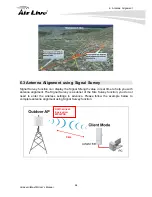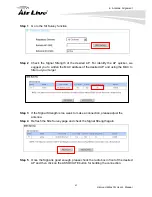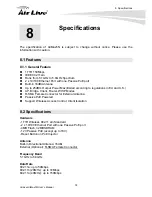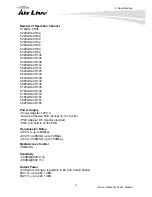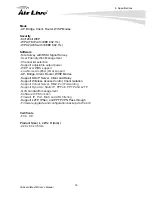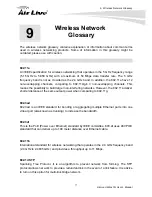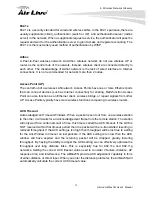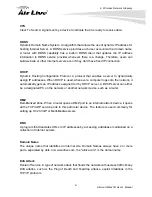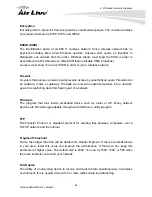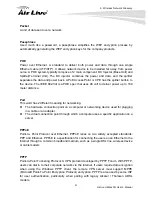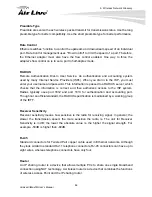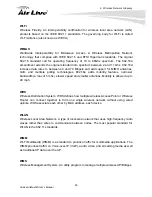
9. Wireless Network Glossary
AirLive AirMax5N User’s Manual
78
802.11d
Also known as “Global Roaming”. 802.11d is a standard for use in countries where systems
using other standards in the 802.11 family are not allowed to operate.
802.11e
The IEEE QoS standard for prioritizing traffic of the VoIP and multimedia applications. The
WMM is based on a subset of the 802.11e.
802.11g
A standard provides a throughput up to 54 Mbps using OFDM technology. It also operates
in the 2.4 GHz frequency band as 802.11b. 802.11g devices are backward compatible with
802.11b devices.
802.11h
This IEEE standard define the TPC (transmission power control) and DFS(dynamic
frequency selection) required to operate WiFi devices in 5GHz for EU.
802.11i
The IEEE standard for wireless security. 802.11i standard includes TKIP, CCMP, and AES
encryption to improve wireless security. It is also know as WPA2.
802.11n
The IEEE 802.11 standard improves network throughput over 802.11a and 802.11g, with
a significant increase in the maximum data rate from 54 Mbps to 600 Mbps. 802.11n
standardized support for multiple-input multiple-output (MIMO) and frame aggregation, and
security improvements.
802.1Q Tag VLAN
In 802.1Q VLAN, the VLAN information is written into the Ethernet packet itself. Each
packet carries a VLAN ID(called Tag) as it traveled across the network. Therefore, the
VLAN configuration can be configured across multiple switches. In 802.1Q spec, possible
4096 VLAN ID can be created. Although for some devices, they can only view in frames of
256 ID at a time.

